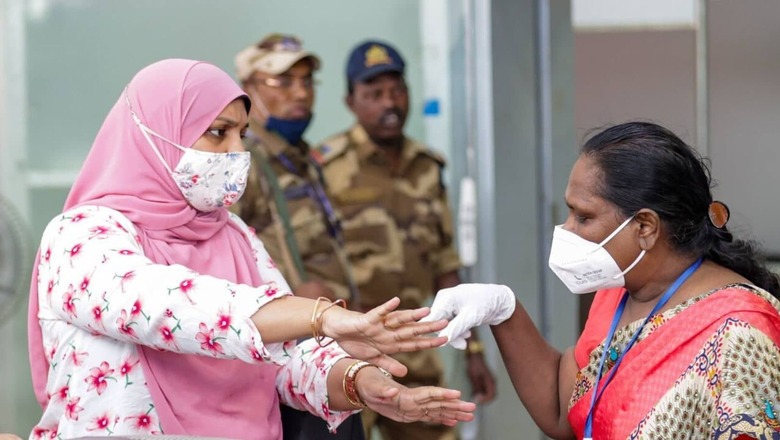
views
Out-of-pocket-expenditure (OOPE) remains a challenging part of India’s health system story. Health financing in the country is still largely private. According to the National Health Accounts (NHA), although OOPE (as a % of Total Health Expenditure) has decreased between 2004-05 and 2017-18 from 69.4% to 48.4%, it continues to be one of the highest globally.
Health insurance provides greater financial protection against health shocks by limiting OOPE in the times of distress. One of the most important steps taken by the government towards tackling this issue and expanding UHC is the launch of the Pradhan Mantri Jan Arogya Yojana (PM-JAY) as a component of Ayushman Bharat. India’s Economic Survey, 2020-21 highlights that the health outcomes of states that adopted PM-JAY improved as compared to those who did not. This underscores the importance of such public health insurance schemes especially for the vulnerable sections of society. The coverage of health insurance has expanded across the country. Between the National Family Health Survey (NFHS)-4 and NFHS-5, the percentage of households with any member having a health insurance scheme has increased from 29% to 41% at the all-India level.
However, some gaps and challenges remain. At the national level, 59% of the households still do not have any member covered under any sort of health insurance. In 19 states/UTs, at least 50% of the households still do not have any member covered by health insurance. Further, according to NITI Aayog’s report ‘Health Insurance for India’s ‘Missing Middle’, the ‘missing middle’ constitutes at least 30% of the population which may not get covered under any government subsidised health insurance schemes like PM-JAY, social health insurance schemes like the Employee State Insurance Scheme or private voluntary health insurance schemes.
Several measures can be taken by governments at the appropriate level to provide an impetus to the expansion of health insurance in India and achieve UHC as well as the health-related Sustainable Development Goals
The Prime Minister’s ‘Saturation Coverage’ drive is a pivotal step in ensuring that the PM-JAY and its attached benefits reach every eligible citizen of India. Greater collaboration should be fostered between the Union and state governments to ensure that the benefits of centrally sponsored schemes like PM-JAY are progressively enlarged. Authorities and front-line workers at the grass-root level may be roped in to ensure speedy saturation of the scheme. For instance, district authorities may be directed to identify the eligible population and lay a block-wise plan to expand the coverage to left-out beneficiaries. This may be expedited via a door-to-door registration drive by each HWC in its catchment area through the ASHA workers. The weekly/monthly progress reviews at the state/union level may be undertaken to ensure that the saturation goals are reached within a stipulated time period.
Similarly, a network of 1.15+ lakh AB-Health and Wellness Centers (HWCs) may be utilised for scaling up Information, Education and Communication (IEC) activities amongst targeted families such that they are aware of their entitlement, benefit cover, empanelled hospitals and process to avail the services under PM-JAY. This may include leveraging village health and nutrition days, visit by ASHA workers to each target family and educating them about the scheme, Mass media, etc. among other activities which are part of the health promotion activities of AB-HWC.
Further, the government should work to build consumer confidence for the scheme through pro-active review of performance indicators and claim status, swift grievance redressal mechanisms, and robust auditing procedures. Ensuring quality of services at the empanelled hospitals and high claim settlement ratio (%) will create a virtuous cycle of trust amongst the citizen about PM-JAY and health insurances in general and will help in citizen’s uptake of PM-JAY.
“Missing Middle” comprises a large segment of the population, which despite being able to pay for health insurance, remains outside the ambit of financial protection against health risks. Addressing the needs of this segment is a critical step in India’s journey towards UHC.
According to the recommendations of ‘Health Insurance for India’s ‘Missing Middle’ report, PM-JAY may be extended by offering a voluntary contributory enrolment by subsidizing the poorest section of missing middle population. The subsidy may be full or partial, as it has fiscal implications for the government. Moreover, to reduce the fiscal burden, the subsidies may be kept temporary by design. This will enable the population to learn about product’s value and will provide the much-needed initial push for uptake of the health insurances.
Studies show that after experiencing insurance coverage, individuals chose to keep their health insurance even after subsidies expired, although the re-enrolment after expiration of subsidy will be contingent upon quality of care, claim settlement ratio and grievance redressal mechanism.
The writer is Young Professional, Development Monitoring and Evaluation Office, at NITI Aayog. The views expressed in this article are those of the author and do not represent the stand of this publication.
Read all the Latest Opinions here


















Comments
0 comment